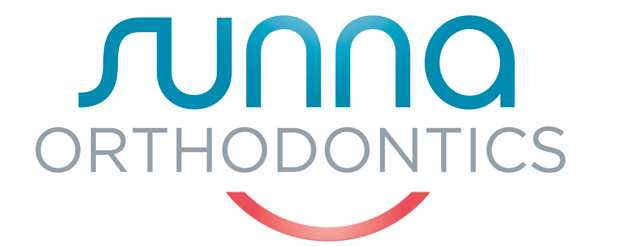About Orthodontics

Why Orthodontics
For most people a beautiful confident smile is the most obvious benefit of having braces. In some cases, Leaving misaligned teeth and poor bites untreated may lead to other dental problems such as tooth decay and gum disease, joint problems, as well as abnormal wearing of tooth surfaces and difficulty in chewing. Orthodontic treatment can help you keep good dental health.
In some cases the upper front teeth may ‘stick out’ and become easily damaged by accident. Orthodontic treatment can push your teeth back reducing their risk of fracture.

Why Orthodontics
For most people a beautiful confident smile is the most obvious benefit of having braces. In some cases, Leaving misaligned teeth and poor bites untreated may lead to other dental problems such as tooth decay and gum disease, joint problems, as well as abnormal wearing of tooth surfaces and difficulty in chewing. Orthodontic treatment can help you keep good dental health.
In some cases the upper front teeth may ‘stick out’ and become easily damaged by accident. Orthodontic treatment can push your teeth back reducing their risk of fracture.
What is the best age for braces?
Many orthodontic problems are easier to correct if detected at an early age before jaw growth has slowed. In some cases, early treatment may mean that a patient can avoid surgery and more serious complications. The American Association of Orthodontists recommends that every child first visit an orthodontist by age 7 or earlier or earlier if a problem is detected by parents, family dentist or child’s physician.
In most cases, however, full orthodontic treatment usually starts when all or almost all permanent teeth have erupted, typically around age 10-12 years old.


What is the best age for braces?
Many orthodontic problems are easier to correct if detected at an early age before jaw growth has slowed. In some cases, early treatment may mean that a patient can avoid surgery and more serious complications. The American Association of Orthodontists recommends that every child first visit an orthodontist by age 7 or earlier or earlier if a problem is detected by parents, family dentist or child’s physician.
In most cases, however, full orthodontic treatment usually starts when all or almost all permanent teeth have erupted, typically around age 10-12 years old.

Adult Orthodontics
It’s never too late to look your best!
You’re never too old to benefit from orthodontic treatment. Today, adults make up about one in every five orthodontic patients. Advances in orthodontics have made treatment more comfortable and more successful than ever for people of all ages. Technological advances in tooth colored, invisible braces and removable invisible aligners have also made orthodontic treatment for many adults more acceptable. Often we will need to work with other dental practitioners — general dentists, periodontists, prosthodontists, and oral surgeons — to provide you with our best results.

Adult Orthodontics
It’s never too late to look your best!
You’re never too old to benefit from orthodontic treatment. Today, adults make up about one in every five orthodontic patients. Advances in orthodontics have made treatment more comfortable and more successful than ever for people of all ages. Technological advances in tooth colored, invisible braces and removable invisible aligners have also made orthodontic treatment for many adults more acceptable. Often we will need to work with other dental practitioners — general dentists, periodontists, prosthodontists, and oral surgeons — to provide you with our best results.
FAQ
What is Orthodontics?
Orthodontics is the branch of dentistry that specializes in the diagnosis, prevention, and treatment of dental and facial irregularities.
What are some possible benefits of Orthodontics?
A more attractive smileReduced appearance-consciousness during critical development yearsPossible increase in self-confidenceBetter function of teethReduced pressures of jaw muscles and jointsIncreased ability to clean teethImproved force distribution and wear patterns of the teethBetter long term health of teeth and gumsGuide permanent teeth into more favorable positionsReduce the risk of injury to protruded front teethAids in optimizing other dental treatment
What are some signs that Braces may be needed?
Upper front teeth protrude excessively over the lower teeth, or are buckedUpper front teeth cover the majority of the lower teeth when biting together (deep bite)Upper front teeth are behind or inside the lower front teeth (Under-bite)The upper and lower front teeth do not touch when biting together (Open-bite)Crowded or overlapped teethThe center of the upper and lower teeth do not line upFinger or thumb sucking habits which continue after six or seven years oldDifficulty chewingTeeth wearing unevenly or excessivelyThe lower jaw shifts to one side or the other when biting togetherSpaces between the teeth
At what age should Orthodontic treatment start?
Many orthodontic problems are easier to correct if detected at an early age before jaw growth has slowed. Early treatment may sometimes mean that a patient can avoid surgery and more serious complications. The American Association of Orthodontists recommends that every child first visit an orthodontist by age 7 or earlier if a problem is detected by parents, family dentist or child’s physician.
What are Phase I and Phase II treatments?
Phase I, or early interceptive treatment, is a limited orthodontic treatment phase that is done before all of the permanent teeth have erupted, between the ages of six and ten.
This treatment is sometimes recommended to make more space for developing teeth, correction of cross-bites, over-bites, and under-bites, eliminate harmful oral habits or re-direct abnormal growth of jaw bones.
Phase II treatment, also called comprehensive treatment, involves full braces and is done when all permanent teeth have erupted.
Would an Adult Patient benefit from Orthodontics?
Orthodontic treatment can be successful at any age. Everyone wants a beautiful and healthy smile! 20% – 25% of orthodontic patients today are Adults.
How does Orthodontic treatment work?
Braces and aligners use steady gentle pressure to gradually move teeth into their proper positions. The brackets that are placed on your teeth and the archwire that connects them are the main components. When the archwire is placed into the brackets it applies pressure to move your teeth to their new, more ideal positions. In the case of aligners, each new aligner is designed to progressively exert gentle pressures on teeth in a pre-programmed manner.
How long does Orthodontic treatment take?
Treatment time vary according to each case. Average time is from one to two years. Actual treatment time can be affected by rate of growth and severity of the correction needed. Treatment length is also dependent upon patient compliance. Maintaining good oral hygiene and keeping regular appointments are important in keeping treatment time on schedule.
Do Braces hurt?
The placement of bands and brackets on your teeth does not hurt. Once your braces are placed and connected with the archwires, however, you may feel some discomfort for a few days only.
Will it affect my Speech?
No. Braces do not interfere with speech but removable braces may need a few days of adaptation before your speech is back to normal.
Will Braces interfere with playing Sports?
No. It is recommended, however, that patients protect their teeth by wearing a mouth guard when participating in any sporting activity. Mouth guards are inexpensive, comfortable, and come in a variety of colors and patterns.
Will Braces interfere with playing Musical Instruments?
No. However, there may be an initial period of adjustment. In addition, brace covers can be provided to prevent discomfort.
What should I do if a wire or a brace become loose?
Call our office as soon as possible to book an emergency visit to have it checked and fixed. If a wire sticks out and is irritating place wax on the wire to reduce the annoyance.
How much will my braces cost?
Orthodontic fees depend on the severity of the patient’s case, type of appliance used, phases of treatment, additional auxiliaries and the length of time in treatment. Your specific treatment fee and financing options will be discussed in detail during your Financial Consultation.
